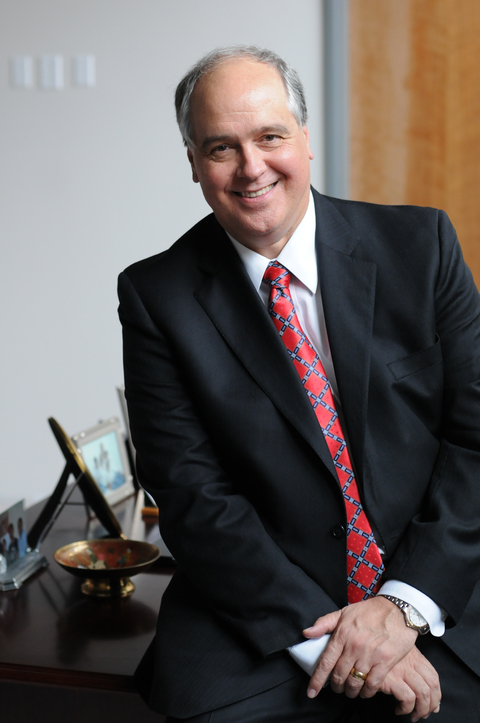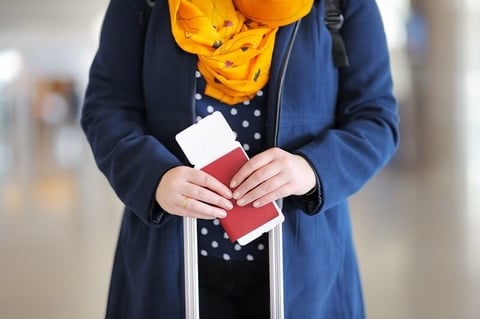Medical students who opened envelopes last Friday were part of the biggest residency Match Day in history, according to the National Resident Matching Program (NRMP).
A record-setting 37,103 applicants applied for 33,167 positions, the most ever offered in the match. The number of available first-year residency positions rose to 30,232, an increase of 1,383 over 2017, the organization that coordinates Match Day said in the announcement.
“In general, it’s a very happy day for people,” said G. Richard Olds, M.D., president of St. George’s University in Grenada, an international medical school that is a leading provider of new doctors in the U.S. “I still remember the day I matched and that’s over 40 years ago.”

(St. George's University)
Olds, who was preparing Friday to take part in the school’s Match Day celebration, said there are two milestones that doctors remember for a lifetime: The day they got into medical school and the day they learn where they matched and will spend their first postgraduate years.
Primary care shortage
Primary care remained a less popular choice among U.S. medical students from allopathic schools than more competitive specialties.
Popular specialties in 2018 were integrated interventional radiology, neurological surgery, physical medicine and rehabilitation and thoracic surgery. Every one of the available positions in those fields were filled.
Of the 30,232 first-year positions available, 14,695 were in primary care specialties and of those 14,333 or 97.5% were filled, with 7,104 or 48.3% filled by U.S. allopathic seniors, according to NRMP. (The American Osteopathic Association has its own match process.)
International medical schools, such as St. George’s University, are helping to meet the need for primary care doctors, said Olds. Three-fourths of the school’s graduates go into primary care and 62% work in medically underserved areas, he said.
“Our school does more to address the country’s social needs than most U.S. medical schools,” he said.
As medical students celebrated Match Day, the Association of American Medical Colleges said the excitement is tempered by the fact that the U.S. faces a shortage of as many as 104,900 physicians by 2030. The AAMC hopes legislation will increase the number of federally supported resident positions, which was frozen by Congress in 1997, said Darrell G. Kirch, M.D., the group’s president and CEO.
Less uncertainty from immigration issues

participated in MatchDay. (Getty/SbytovaMN)
While last year’s Match Day process was marked by uncertainty as a result of the Trump administration’s immigration policies, Olds said he thinks those concerns were lessened this year.
Last year, there was a great deal of nervousness about whether non-U.S. citizens would be able to get the visas they need to work in the U.S. by the July 1 deadline when residency programs begin, he said.
Hospitals were feeling pressure to reject medical student candidates from other countries as they feared they could be barred from entering the U.S. under Trump’s immigration ban. However, medical students were able to get their visas and with the same administration in place in Washington, there was less worry for the 2018 match, he said.
The NRMP, however, reported a decline for the second year in a row in the number of non-U.S. citizen international medical graduates participating in the match. Concerns remain for the AAMC.
“We also remain concerned that uncertainty surrounding Deferred Action for Childhood Arrivals (DACA) and physician immigration introduced new challenges into this year’s residency application process, as evidenced by a 22.7% drop in applicants from countries named in the three immigration executive actions last year,” said Kirch.
The DACA program allows undocumented Americans who were brought to the country as young children by their parents to continue their employment, education, training and research in the U.S. In September, Trump ordered the DACA program to end in March, but a federal court has kept the program in place for now.
“We urge the administration and Congress to increase federal support for the physician pipeline, support a permanent legislative solution for Dreamers, and ensure academic medicine’s ability to meet the increasing healthcare needs of a growing, aging population,” he said.
Olds said St. George’s University has less than 10 students from the countries included in Trump’s travel ban and those students go to England to continue their medical training.